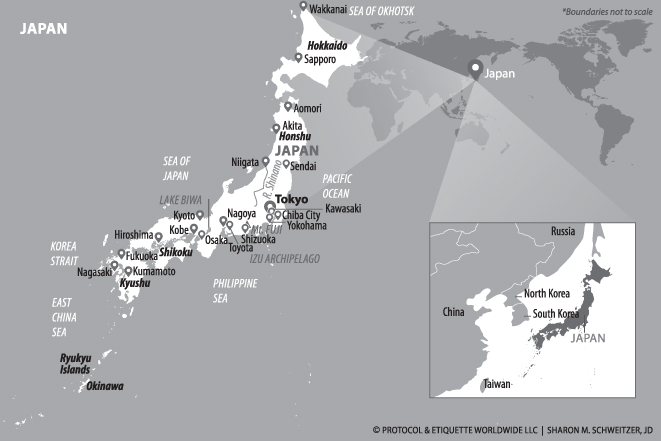Chapter 8Japan

“Japan never considers time together as wasted. Rather, it is time invested.”
—A Hundred Years of Japanese Film: A Concise History
Introduction
From bonsai to bullet trains, and tea ceremonies to tanshifunin postings, Japan is a country of contrasts in which the ancient and the ultramodern are seamlessly blended. Ancient temples are nestled among business and technology towers. Japanese concepts including emojii, kanban, kaizen and keiretsu are recognized and used worldwide. We hear about the physical and financial battering Japan endured following the March 3, 2011 Tohoku earthquake and tsunami, then marvel at the way the country's economy rebounded and surpassed expectations the following year. By the end of the first quarter of 2014, Japan's economy was growing at its fastest pace in nearly three years.1
According to the IMF's World Economic Outlook, Japan was the third largest world economy in 2014, behind only the U.S. and China, with a GDP of $4.8 trillion2—despite having only a fraction of those countries' populations. Japan has consistently been a major player in the world economy and a driving force in Asia. Indeed, it stands apart from its Asian neighbors as the only Asian member of the G7, a group of the seven most influential and wealthiest world powers and is also the only major developed Asian country, as recognized by the United Nations.
Undoubtedly, ...
Get Access to Asia: Your Multicultural Guide to Building Trust, Inspiring Respect, and Creating Long-Lasting Business Relationships now with the O’Reilly learning platform.
O’Reilly members experience books, live events, courses curated by job role, and more from O’Reilly and nearly 200 top publishers.

